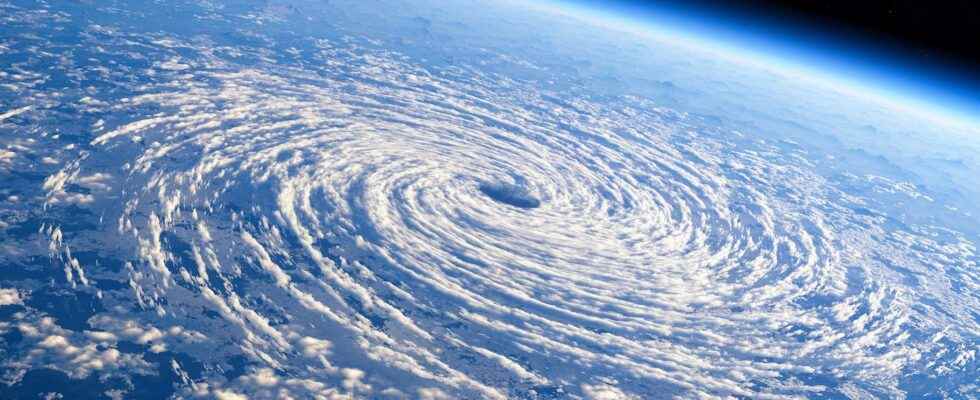Tropical cyclones, they only form … in the tropics! This is obvious that could change with anthropogenic global warming. Researchers believe that this type of low pressure system could soon appear in mid-latitudes. And touch heavily populated regions like New York, Beijing or Tokyo.
You will also be interested
[EN VIDÉO] Incredible time-lapse of three hurricanes filmed from the ISS Three hurricanes observed from space, from the International Space Station, on August 30, 2016. Lester and Madeleine deploy over the Pacific and approach Hawaii. While Gaston, born off Bermuda, heads for the Azores.
The cyclones tropical – those also called hurricanes or typhoons – get their name from the fact that they are formed at the bass latitudes – either less than 30 ° north or south. Above the warm waters of the tropical oceans. But with anthropogenic global warming, they may soon no longer deserve this name so well. According to Yale University researchers (United States), these low pressure systems will migrate north and south, respectively in the northern hemisphere and in the southern hemisphere.
The researchers are even already highlighting that the events which could constitute warning signs of a situation called to become much more classic under the effect of the warming due to our emissions greenhouse gases. The Alpha storm which hit the coast of Portugal in September 2020. Or hurricane Henri which, in August 2021, hit Connecticut (United States).
With the global warming, in fact, the temperature differences between theequator and the poles are shrinking. What cause a weakening of the jet stream. And open the gate from mid-latitudes to tropical cyclones. The numerical simulations of climates hot past based on physical of the atmospheric convection show, for example, that this already happened in the Eocene – between 56 and 34 million years ago – and in the Pliocene – between 5.3 and 2.6 million years ago.
The neglected impacts of global warming on cyclones
Until then, climate projections did not present a resolution sufficient to simulate realistic tropical cyclones. The indirect approaches used even seemed “Distorting the underlying physics of tropical cyclone formation and development.” “ Result: a number of methods concluded with contradictory predictions. But the work of researchers at Yale University examines the links between the physics of hurricanes at much smaller scales – too many to represent in the climate models current – and the better simulated dynamics of land-based jet streams and air circulation.air North South.
“Our work shows that the tropical cyclones of the XXIe century are likely to occur over a wider range of latitudes than has been the case over Earth over the past three million years. This represents a significant and underestimated risk of climate change ”, specifies Joshua Studholme, physicist, in one Yale University press release. Because regions where major cities such as New York, Boston, Beijing or Tokyo are established could be affected.
All this while now since the 1980s researchers have predicted an increase in the intensity of storms linked to global warming. Based on concepts of thermodynamics. And the observations tend to confirm the theory. Bad news for the tropics. Which therefore also becomes today for more middle latitudes. Because even if the frequency of low pressure systems should not increase – the debate on this subject is still continuing in the community – the risks due to tropical cyclones should increase overall in the context of global warming.
Interested in what you just read?
.
fs11
